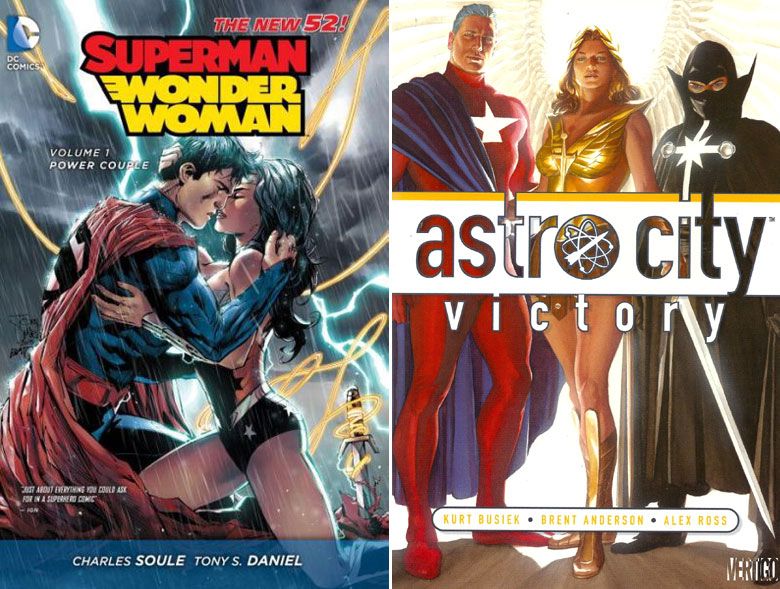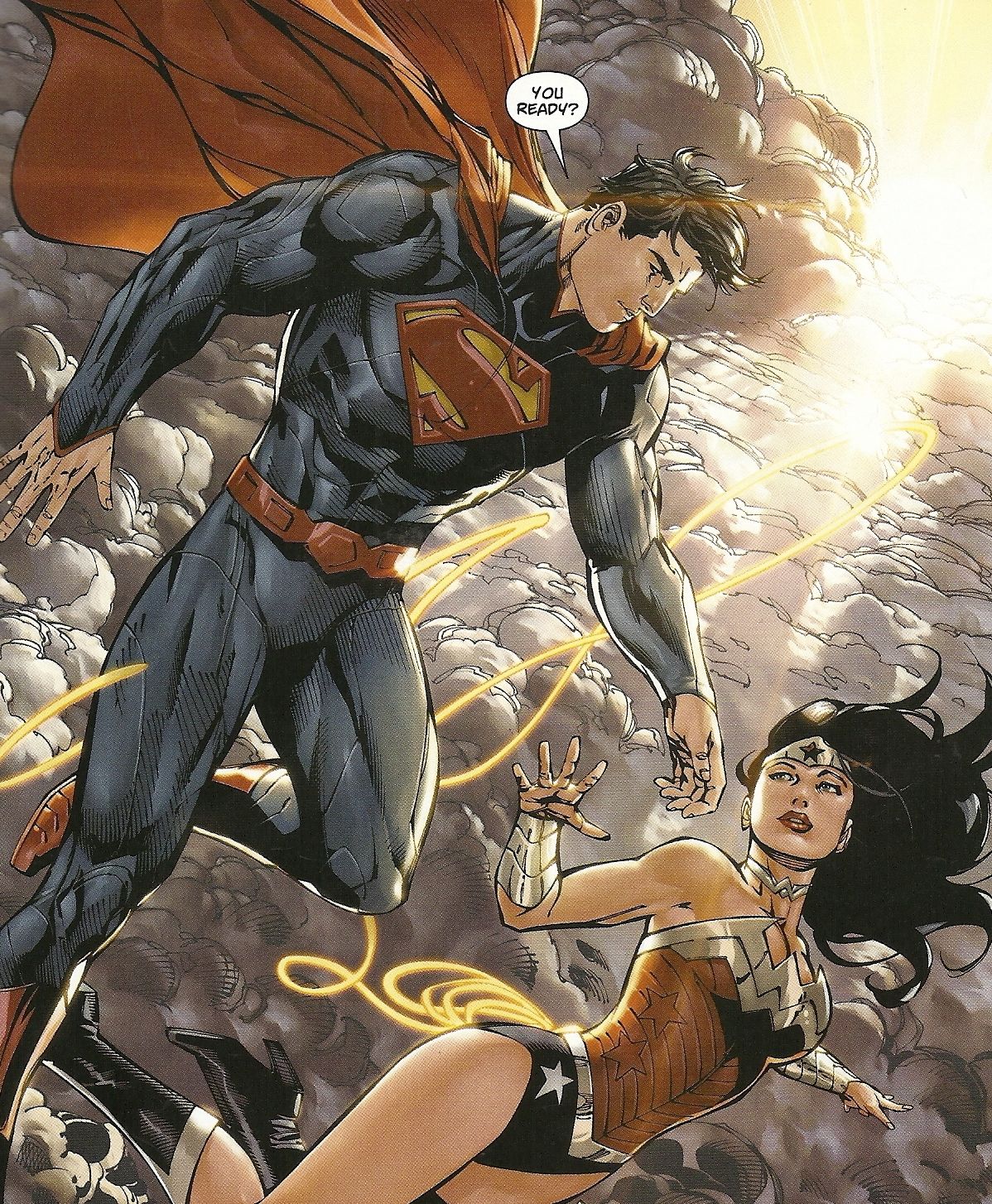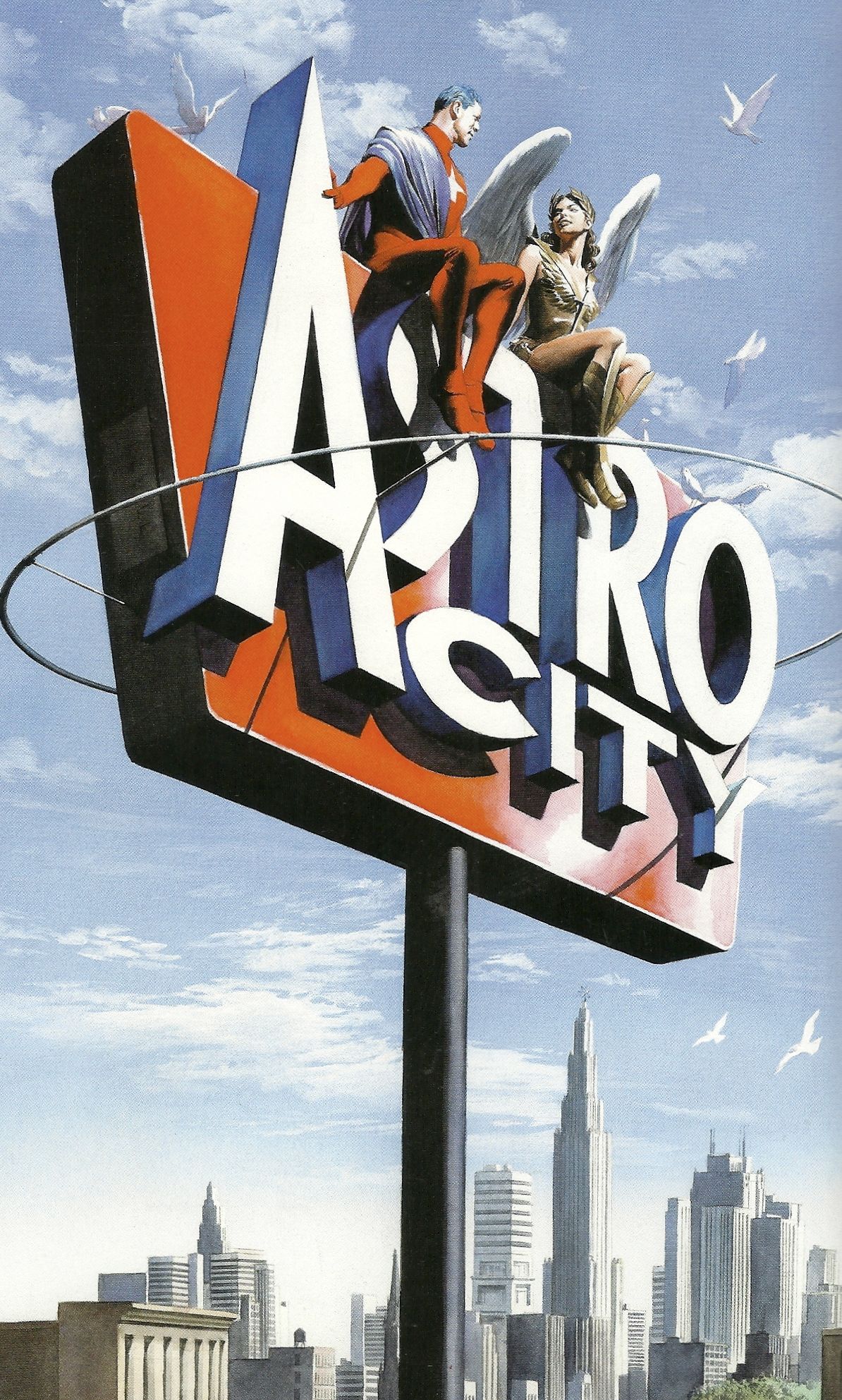Superman is the world's greatest superhero, Wonder Woman is the world's greatest superheroine. They have so much in common — their superpowers, their costume colors, their hobbies, their social organizations — that they seem perfect for each other ... if only it weren't for that nosy reporter friend, or girlfriend, or wife, or object-of-his-affection that's kept the Man of Steel more or less spoken for over the course of his 75-year career.
I suppose that's why Superman and Wonder Woman so often become a couple in various out-of-continuity stories like Kingdom Come and Injustice, and a large part of why DC Comics decided to use its 2011 reboot as an opportunity to make the pair a super-powered power couple, one of the more dramatic, non-sartorial changes in either characters' milieus the reboot has so far introduced.
Perhaps because DC didn't want to relegate either character to a supporting role in the other's book, the publisher in October 2013 launched Superman/Wonder Woman , a new title chronicling the pair's romantic relationship. The first collection, Superman/Wonder Woman Vol. 1: Power Couple, arrives this week. Ironically, it will be sharing shelf space with the new Astro City: Victory, which collects a story about Kurt Busiek, Brent Anderson and Alex Ross' Wonder Woman analogue Winged Victory, dealing with the way she relates to the men in her life, including her boyfriend, Superman analogue The Samaritan.
Of course, the characters in Astro City aren't the real Wonder Woman and Superman, just similar enough to allow for commentary on the originals — something I'm sure quite a few readers think about the New 52 Wonder Woman and Superman as well — but it may be instructive to read the two works together.
Collecting the first seven issues of Superman/Wonder Woman, Power Couple is written by Charles Soule and drawn mostly by pencil artist Tony S. Daniel and inker Batt, with the now almost-expected battalion of fill-in artists making sure the boos ships on time (pencilers Paulo Siqueira, Eddy Barrows and Barry Kitson, and inkers Sandu Florea, Eber Ferreira and Kitson).
As the Wonder Woman title has existed almost completely walled off from the rest of the DC Universe since its launch — likely to its benefit, given how consistent the series has been — Soule uses this book to combine the two franchises, not blending them so much as nailing them together, side by side, with the two principals acting as the agency uniting Superman's world of sci-fi horror and soap-opera journalism with Wonder Woman's current backdrop of urban-fantasy mythology.
The two characters began their relationship in an issue of the Geoff Johns-written Justice League, suddenly realizing after five years that maybe they were kinda into one another, and here they make their first attempts at dating, doing League stuff together in uniform, and having dinner dates out of costume.
Soule handles discussions about their relationship — which the secretive Superman wants no one, save maybe Batman, to know about, while Wonder Woman doesn't like hiding anything — fairly well, and seems to have taken the "What if Superman and Wonder Woman were dating?" premise as a creative challenge of great personal interest. (This being the brutal Wonder Woman of modern times, the relationship gains still more tension when it comes to fighting, as Superman won't kill and usually seeks peaceful solutions, while this iteration of Wonder Woman generally throttles and stabs everything.)
The relationship gets a dramatic conflict as well, as a mysterious someone has a photo of the two locking lips, and has sent it to Cat Grant, who apparently runs a website that Clark Kent writes for, meaning ready or not, that secret is going to be outed. This being superhero comics, however, there has to be a lot of garish violence, and so the A plot involves villains from both characters' catalogs, which fit together only somewhat awkwardly.
Doomsday appears in the first issue, interrupting Wonder Woman's out-of-left-field attack on a military ship by murdering everyone on it and then breaking Diana's arms, and then he disappears. He's soon followed by Zod (who murders 10 random civilians upon his first appearance), and then Faora, making them an evil power couple intent on destroying and/or conquering and/or ruling Earth, or whatever.
Wonder Woman's divine family gets involved at first rather innocently, as Wondy and Superman go to visit The Smith for some Doomsday-fighting weapons. But when Wonder Woman's half-brother Sun appears, he and Superman come to blows ... which irritates the god enough that he eventually sides with the bad Kryptonians, powering them up with solar energy.
The artwork is, of course, DC house style, so, when everyone's on deadline, it looks like your typical Tony Daniel artwork, full of poses and splash pages. As the series progresses, the style changes rapidly from scene to scene, but there's always a lot of posing and splashes and explosions of blood.
It's almost unfortunate that DC included the variant cover gallery, as then readers get to see Cliff Chiang and Aaron Kuder drawing the two characters together, and thus might find themselves imagining what the proceeding book could have looked like.
Unsurprisingly perhaps, Victory is an infinitely better-looking book. Even if one prefers the more dynamic, figure-first work of Daniel to the more stately, detail-rich work of Brent Anderson, the latter does draw every single panel of the story arc himself; Victory therefore reads like a graphic novel, whereas Power Couple reads like a stack of bound comics, a perhaps small but important distinction in experience.
If you're not familiar with Astro City — you should be, as it's been published off and on since 1995 and has, during all that time, remained one of the better super-comics available, but I realize it's not quite the household name that "Superman" and "Wonder Woman" are — the main thing you need to know is you can start with any of the collections and follow along just fine. The basic premise is a unique superhero universe, set around the titular city, in which analogues of various superheroes all coexist.
Some of these characters are pretty direct stand-ins for Marvel and DC properties — squint hard at this cover and you can see DC's Trinity standing there in silhouette — while most have more obscure or combined corporate comic inspirations.
This volume focuses on Winged Victory, a super-woman empowered by a council of women during a visit to Europe where she encountered the Winged Victory of Samothrace statue. She became a Wonder Woman-esque hero, and devoted herself not only to superheroics, but also to setting up school/shelters for women in crisis, where they are protected, taught self-defense and, in general, to "stand for themselves." (In a very real way, Winged Victory is a better, truer version of DC's old Wonder Woman character than the publisher has shown in its comics since ... well, not since the turn of the millennium, anyway.)
This story arc opens with a young boy seeking refuge in one of those schools — which have ever only allowed females in — and spying a (tastefully, TV-)nude Winged Victory and Samaritan frolicking in the night sky (if you're wondering, there are no such scenes in Power Couple; just implications that we just missed one, as in one where the character's are shown getting dressed next to a slightly messed bed.) In short order, Winged Victory's world begins to unravel: Female supervillains tell the media she paid them to stage fake fights to increase enrollment at the schools, former students appear alleging abuse and corruption within the schools, and the smear campaign is clever enough that Winged Victory finds her schools being searched by S.H.I.E.L.D.-like law enforcement agency EAGLE and a world always suspicious of her now doubting her more than ever.
What's really going on doesn't matter that much. Busiek's plot is perfectly well constructed, as always, of course, but the real focus of the story is the inherent difficulty involved in male and female relationships, perhaps particularly when the participants are well-meaning, and how messy, even untenable things, can get when individuals become too wrapped up in symbolism, worrying how every move might be interpreted, or in thinking that any one statement or action is some sort of socio-political manifesto.
So in the superhero version of wondering whether he should pay for dinner or open the door for her, Samaritan frets over helping Winged Victory without over-helping or insulting her. Winged Victory herself worries that she relies too much on the help of men like Samaritan and The Confessor — good men, but men all the same — instead of doing everything for herself, and so on.
This tension with which Busiek has his otherwise-straightforward supehero comic book fairly vibrating is as timely as it is timeless, and speaks of and to a male confusion of wanting to do the right thing but not knowing how to do it — or at least not how to do the right thing in the right way.
The conclusion seems sensible enough, with Winged Victory eventually deciding not to play the game at all, and think of herself and her allies as individuals rather than gender symbols, even if they are also that. But I admit that even as I was reading this, I found myself worrying if that was too typically male an understanding, and noting that the book was created almost entirely by men (one of the colorists is a woman, as is its editor).
Agree or disagree – with the implied messaging, or with my reading of it — this seems like a deceptively important little book, and one I wouldn't mind seeing the comics blogosphere pick up for an Internet-wide book club.
I mentioned that it doesn't really matter in which order you read Astro City collections, but I should probably amend that by noting this is actually a great place to start, as it collects not only the "Victory" story arc, but also Astro City: A Visitor's Guide, which includes a short story, a bunch of supplementary material like maps and a history, and 25 character profiles/pin-ups drawn by a who's who of artists, including Jim Lee, Bruce Timm, Darwyn Cooke, John Romita Sr., Jim Starlin, Walt Simonson, Michael Golden, Simon Bisley and Kelley Jones.



